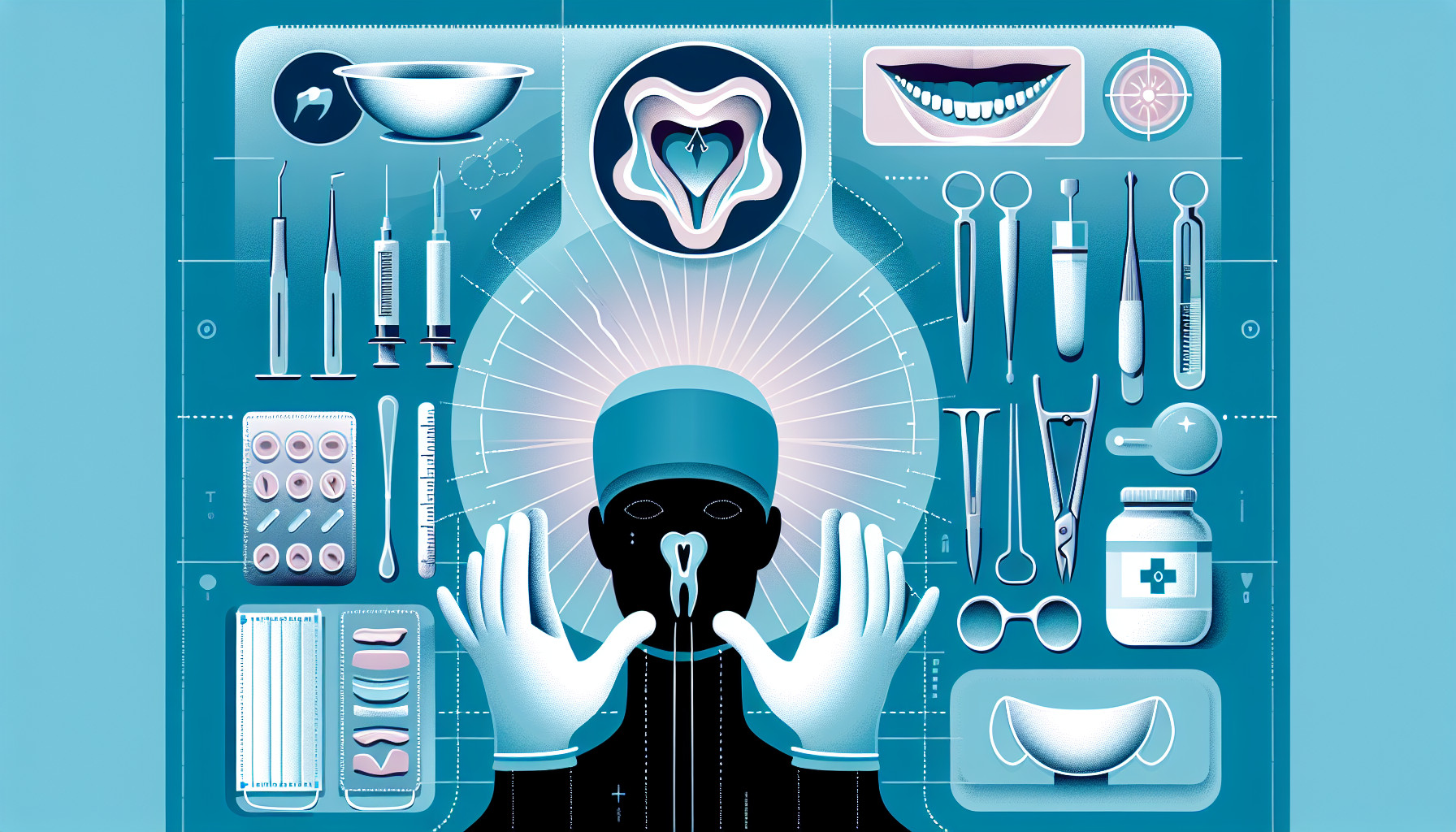Our Summary
This research paper examines the best ways to handle specific dental issues, including cases where there’s a hole between the mouth and sinus (or “oroantral fistula”), cases where dental implants poke into or are completely stuck in the sinus, and cases where bone grafts used for enhancing the sinus get infected. The paper discusses how to manage these problems, taking into account whether there is also an infection in the sinus that originated from a tooth. The paper emphasizes that a team-based approach involving both oral surgeons and ear, nose, and throat specialists is often needed to achieve the best results.
FAQs
- What is the optimal management for oroantral fistulas and displaced implants?
- How are infected bone grafts used for sinus augmentation managed?
- What is the role of a multidisciplinary approach in the management of infectious odontogenic sinusitis?
Doctor’s Tip
A doctor may advise a patient undergoing oral surgery to follow post-operative care instructions carefully, including proper oral hygiene practices and avoiding certain foods that may disrupt healing. Patients should also attend all follow-up appointments to monitor healing progress and address any concerns promptly. It is important for patients to communicate any pain, swelling, or unusual symptoms to their doctor to ensure proper management and prevent complications.
Suitable For
Patients who may be recommended for oral surgery include those with oroantral fistulas, implants protruding into the maxillary sinus, implants completely displaced into the sinus(es), and infected bone grafts used for sinus augmentation. These patients may require a multidisciplinary approach involving oral surgeons and otolaryngologists to ensure optimal therapeutic outcomes.
Timeline
- Before oral surgery:
- Patient consults with oral surgeon to discuss treatment options and potential risks and benefits.
- Preoperative evaluation and imaging (such as X-rays or CT scans) are performed to assess the condition of the teeth and surrounding structures.
- Patient may be prescribed antibiotics or other medications to prevent infection or manage pain.
- Patient undergoes anesthesia or sedation before the surgery begins.
- During oral surgery:
- Oral surgeon performs the necessary procedures, such as tooth extraction, implant placement, or sinus augmentation.
- Patient may experience some discomfort or numbness during the procedure.
- Oral surgeon closes the surgical site with sutures or other materials.
- After oral surgery:
- Patient is monitored in the recovery area until they are stable.
- Patient may experience pain, swelling, and bleeding in the days following the surgery.
- Oral surgeon provides postoperative instructions on how to care for the surgical site and manage pain.
- Patient may need to follow up with the oral surgeon for suture removal or other postoperative care.
- Patient may need to avoid certain foods or activities to promote healing.
- Patient may need additional procedures or treatments if complications arise, such as infection or implant displacement.
Overall, the timeline of a patient’s experience before and after oral surgery involves preparation, the surgical procedure itself, and postoperative care to ensure optimal healing and outcomes. Collaboration with a multidisciplinary team, including oral surgeons and otolaryngologists, may be necessary in complex cases to address any complications that may arise.
What to Ask Your Doctor
- What is the specific oral surgery procedure that I will be undergoing?
- What are the potential risks and complications associated with this procedure?
- How long will the recovery period be and what can I expect during the recovery process?
- Will I need any special post-operative care or follow-up appointments?
- Are there any specific dietary restrictions or recommendations that I should follow after the surgery?
- What type of anesthesia will be used during the procedure and are there any potential side effects?
- How experienced are you in performing this specific oral surgery procedure?
- What are the success rates for this type of surgery and what are the potential outcomes?
- Are there any alternative treatment options available for my condition?
- Will I need any additional imaging or tests before the surgery?
Reference
Authors: Chiapasco M, Tommasato G. Journal: Otolaryngol Clin North Am. 2024 Dec;57(6):1139-1155. doi: 10.1016/j.otc.2024.07.007. Epub 2024 Aug 30. PMID: 39214737
